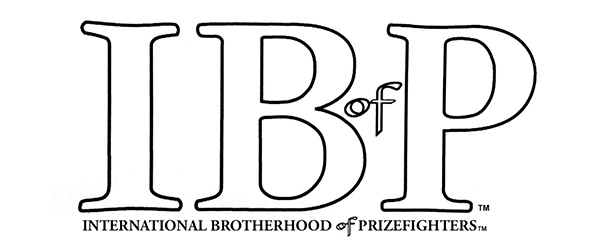Featured Articles
The Fifty Greatest Light-Heavyweights of All Time, Part 4 (No. 20-11)

Welcome to the jungle.
Although light-heavyweight surprised with its lack of depth in comparison to say, middleweight, the top twenty is monstrous. The fighters listed between twenty and eleven, in contrast with say, heavyweight, are a monumental threat to the fighters that make up the top ten. What separates the penultimate instalment from the ultimate isn’t necessarily quality of the light-heavyweight but the quality of the light-heavyweight that the fighter defeated, the length of time they spent in the division, or their level of dominance.
At #20 is a fighter who gave Harry Greb some of his toughest fights. At #18 is a stylistic foil so tricky that greater fighters may have succumbed to his deadly counterpunching stylistics; #17 and #16 between them, possibly, could defeat every fighter who will make up the top ten, the first slashing the rhythm of the very best boxers, the second surviving to out-point the deadly punchers. At #13 is a fighter that some people identify as something called the all-time head-to-head pound-for-pound greatest-of-all-time.
You get the point. These are some good fighters.
I hope you enjoy what I have written about them.
#20 – KID NORFOLK (83-23-6; Newspaper Decisions 28-4)
Kid Norfolk (born William Ward) made some decent money in fights in New York in 1921 and just handed it off to a charity that seems to have supported Irish children who didn’t have enough to eat. Four months later he found himself in Pittsburgh ring with the legendary and deadly Harry Greb landing, in the third, a booming right hand that left Greb neatly (if momentarily) deposited on the canvas. Norfolk got the better of the first five rounds of their ten rounder before Greb, being Greb, found his way back, generally being seen as having beaten Kid.
Norfolk and Greb were the same type of man. It was inevitable that they would meet again and when they did in 1924, Norfolk displayed a different side of his character. William Ward gave money to hungry children. Kid Norfolk was one of the most violent and brutal fighters in ring history. He hit Greb low. In the third he butted, or charged him. It was, according to the Pittsburgh Post, “the toughest, roughest, ugliest fight” ever seen. In the fourth the two men butted, hit each other low, elbowed, held and hit their way to the bell for the sixth…and then continued to fight. The referee disqualified Greb, absurdly, awarding the victory to Norfolk although it is not one that is held in any real regard for the purposes of this list.
Fortunately, Norfolk put in work in the light-heavyweight division of the 1920s for all that many of his best wins were earned in the heavyweight division and there is plenty more to recommend him. As well as perhaps the toughest pressure style of a tough era, he smashed Tiger Flowers, who defeated Greb, dominated a series with an ageing Jeff Clarke, gave Battling Siki the beating of his life, thrashed Gunboat Smith in a similar fashion, remorselessly battered Billy Miske and dominated the Jamaica Kid. Norfolk was Dwight Muhammad Qawi in an era better suited to his inherent ferociousness; it is fitting that he slips in here just in front of his descendent.
#19 – JACK DILLON (94-8-15; Newspaper Decisions 93-19-7)
Jack Dillon was the original giant-killer. Short, squat, with a pug’s face vanishing into a thick skull he was built for this kind of work, as a natural a freak as ever boxed. A title claimant at middleweight he was chased from the division by Frank Klaus in 1912, happily visiting it for money fights against name fighters but from the following year he was more likely to be seen tearing his way through the massed ranks of one of the deepest light-heavyweight divisions ever assembled.
Tearing is the right word – Dillon was a vicious and aggressive fighter, astonishing given his habit of giving away poundage to naturally larger men. Dillon, however, was not just a beast but a thinking beast, slippery, clever, difficult to hit clean despite his aggressive, rushing style. It was a terrifying combination and it made him one of the greatest of his era.
Terrifying, too, was his thirst for the ring. He was out thirty times in 1912 and included among his victories was a ten round newspaper decision over Jack “Twin” Sullivan, a light-heavyweight from the last generation who had made heavies sit up and take notice, a symbolic passing of the torch between two light-heavyweights feared by giants.
In 1913 he began his epic series with Battling Levinsky, a defensive genius with a superb left that would trace Dillon’s decline. In six consecutive battles from 1914 through to 1916, Dillon seems to have got the better of his nemesis, winning a mixture of newspaper decisions (in states where official renderings were not permitted) and referee’s decisions, with one draw. In the course of this series, Dillon began claiming the light-heavyweight championship of the world, a claim that today is generally recognised as true; but by the end of 1916, Levinsky had caught up to him and the title both, thrashing Dillon in a one-sided bought in October of that year in what would be their last contest. Dillon is recognised as the victor in their drawn-out series, going 5-2-2
Levinsky had overtaken Dillon only because he had slowed; Billy Miske and Harry Greb were among those to benefit, but still Dillon remained aggressive enough and good enough to dominate the likes of Gunboat Smith and Al McCoy. In his prime, he was a lethal combination of boxing and punching that rarely came unstuck even against the very best.
#18 – VICTOR GALINDEZ (55-9-4)
Victor Galindez fought at the very top of the light-heavyweight division for five long and tough years and lost only twice, to Mike Rossman in September of 1978, avenged, and to the rampant Marvin Johnson in November of 1979. Against this must be weighed the end of his prime and twenty-two victories, over consistently excellent opposition.
One criticism of his performances versus that excellent opposition is that he sometimes scraped home, winning only by the narrowest of margins, and to an extent this is true. When he met the superb Eddie Mustafa Muhammad over fifteen in 1977 he won only by virtue of the brilliant knockdown he scored in the fifth round, slipping and countering an unruffled Muhammad for a count. Galindez didn’t push though and soon the two were swapping rounds again sometimes just a punch between them. Galindez wasn’t bad, but he didn’t dominate, although it was rare to see a fighter do so against Eddie Mustafa Muhammad.
But Galindez was that type of fighter. He had brilliant economy and brilliant judgement. In his fight with Yaqui Lopez that same year, he was left needing to win the final round for the win once again – but he did that. When Lopez got the rematch he felt he deserved the following year, Galindez beat him again and again it was narrow. Watching Galindez though, one feels that he is generally in control of his own fate in these seemingly desperate encounters. Partly this sense is spurred by a sense that such domination would be necessary for his great success; you see Galindez is not really a light-heavyweight.
In terms of poundage, he spent almost his entire career within the range and there is a squatness to his frame that suggests a light-heayvweight’s power and strength packed into a much smaller fighter. At between 5’9 and 5’10 with a reach of just 73” inches he was considerably shorter in both height and length than compatriot and legendary middleweight Carlos Monzon. Everybody he fought was taller than him; everyone he fought outreached him.
He solved these problems with such wonderful elegance that it is easy to forget his stature when watching him box. For example, he rarely led with his jab, the reason being that this punch is almost as dangerous for him to throw as all the others; so he threw the others, showing even experienced opponents something new with a slippery, sliding counter-attack filled with feints and strikes that obeyed different rules to the ones built in the gym.
He missed out on John Conteh, and that hurts him as his status as the best light-heavyweight of the mid-seventies must remain in question, but most of the top men tumbled. I have a sense that had he met Conteh and perhaps Miguel Angel Cuello, a place in the top ten would have been a possibility; as it is he scrapes, barely, into the top twenty.
#17 – LLOYD MARSHALL (70-25-4)
Lloyd Marshall is one of the most fascinating fighters in history. A unique and bizarre style comprised of feints, leaps, sudden unexpected attacks but married to some genuinely technically astute boxing, all of it done with swift surety made him one of the most deadly boxers of the shadowed “Murderer’s Row” which has received so much publicity in the last ten to twelve years. In terms of legacy, Marshall has not profited. Charley Burley has been the poster-boy for that group of marginalised black fighters and I understand why, but Marshall was almost certainly just as good, a fact underlined by his defeat of the lauded Burley.
The injustices inflicted upon both of these men were many, but it is arguably Marshall who suffered more. A crack amateur, financial circumstance demanded he turn professional before the Olympic trials; sleeping under the bleachers at a baseball stadium he fell ill and couldn’t find work. When, finally, his career took off, Marshall found himself cornered by harsh reality and perhaps a certain moral weakness is rumoured to have become what was politely known in the lexicon of the time as a “business” fighter – a fighter paid to take an opponent the distance, or even to lose. While I may have personal suspicions regarding which fights specifically are tainted in this way there is no direct proof and as such these losses are treated as what they are – legitimate losses or possible quit jobs. Either way, Marshall’s “inconsistencies” count against him. Post-war, Marshall slipped badly. 1945 wasn’t an unreasonable year for him with his only two losses coming in hard-fought contests against the great Archie Moore, but by the end of the decade he was wavering dangerously close to becoming just an opponent, a tragedy.
Even more tragic was that Marshall never won the light-heavyweight title, despite the fact that he thrashed two champions in one sided contests. Anton Christoforidis was less than two years removed from his short title reign and had lost, in that intervening time, to only two fighters, Ezzard Charles and Jimmy Bivins. Bivins beat Christoforidis narrowly but Marshall hammered him, letting only two rounds of the ten round fight slip. The other championship victim that Marshall buried was Freddie Mills. Marshall crushed Mills, who was a year removed from the title, stopping him in just five, half the time it took the brutal Gus Lesnevich.
Precious, wonderful minutes of Marshall’s battle with Mills survive. He is a gunslinger of the highest order. Past-prime, hovering on the cusp of irrelevance, he is lethal. His short left-hook, especially to the body, is one of the very best punches of its kind, not just in the light-heavyweight division but in any division. Mills was so befuddled that at least once he appeared to square up to the referee.
Neither one of these wins are Marshall’s best. Marshall’s best win is over Ezzard Charles. Marshall is the only light-heavyweight ever to stop Charles. He dropped him between seven and nine times, stopping him in eight rounds. The fight was not competitive. The fight was another one-sided thrashing.
When Marshall was on he was almost unstoppable. There are too many losses for him to rank among the fifteen best at the weight, but he was probably good enough to test any of them and beat many of them and he beat as many ranked men as any but the quill and the long-standing belt-holders. He beat as many really good ones as almost any of them. Spotted throughout this series of articles are references to the all-time rankings of historians down the years, men who know the sport: not one of them, not a single one of them rates Lloyd Marshall top twenty. Witness:
Ezzard Charles, Nate Bolden, Joe Kahut, Curtis Sheppard, Anton Christoforidis, Shorty Hogue, Teddy Yarosz, Freddie Mills, Holman Williams, Bob Garner (stopped in one), Bob Karner (stopped in one).
There are guys who are routinely ranked above Marshall who never, ever get anywhere near besting this level of competition but appear on both the Boxing Scene list and the IBRO list. Why? Georges Carpentier is on the IBRO list! To be brutally frank, the record of light-heavyweight Lloyd Marshall embarrasses Carpentier’s record at light-heavyweight.
And you can quote me on that.
#16 BILLY CONN (64-11-1)
Seeing Sam Langford ranked in the low twenties was, I’m sure, something of a shock for the traditionalists among The Sweet Science’s readership – my guess is seeing Billy Conn outside the top ten will be an even bigger shock.
As a longtime boxing fan I’m familiar with lists and I’ve come to understand, like you, that criteria are everything. What the listmaker espies as crucial is what defines the standing of a given fighter on any list. Billy Conn appears at #10 on Boxing Scene’s top twenty-five at the weight, the same spot at which he was placed by Herb Goldman; he is in at #9 on the IBRO list. Here, he is lower by several spots and this needs to be explained. The primary difference here is criteria.
My criteria, as stated in the introduction to Part One, are concerned with fights contested at the 175lb limit. As I wrote then, fights “that were fought above the light-heavyweight limit will be considered…a heavyweight contest and will not be credited here.” Furthermore, “the weight class in question is always defined by the heavier fighter. If a 173lb man is fighting a 203lb man he is engaging in a heavyweight contest.” Provision is made for an old-fashioned “over-the-weight” meeting, of course, meaning that a fight between 177lb fighter and a 178lb fighter can still be a light-heavyweight contest – but this rule of thumb extends itself to divisions below, too. Conn, to put it bluntly, is caught in a perfect storm of criteria that inhibits his ranking at this weight.
Conn had no amateur experience and was blasted face first into professional competition in the mid-thirties, as a teenager, breaking into the world-class only a few years later; but he fought then as a middleweight, not a light-heavyweight. It was 1938 before he stepped into the bigger division in earnest and he preferred to do so against old middleweight rival Honey Boy Jones, a clean win in twelve; a decisive victory over journeyman Domenico Ceccarelli followed before a narrow squeeze past Eric Seeling and a raucous, foul-filled loss to old-foe, the 162lb Teddy Yarosz (Conn weighed 168lbs). “Too much Irish” was the call from boxing scribe Regis Welsh in the aftermath, a sentiment typical of the generally indulgent nature of the press when it came to Conn. This loss to Yarosz, however, was the only one Conn ever posted at light-heavyweight; in fact, he went unbeaten over nineteen contests before Joe Louis famously wiped him out in thirteen rounds of their 1941 heavyweight title fight. “What’s the point in being Irish if you can’t be stupid?” was how Conn explained his decision to duke it out with Louis with only minutes to go until he hoisted the title. That was his eighth consecutive battle at heavyweight. His decision to hunt Louis called for him to abandon the light-heavyweight title he had won against Melio Bettina in 1939. He defended against Bettina once more, later that same year, then twice beat Gus Lesnevich, and then he bid light-heavyweight adieu. He revisited it once more, for a fight with reigning middleweight champion Tony Zale (Conn weighed 175lbs), making Zale another in a long line of middleweights that Conn defeated at the weight; Zale joined a 160lb Fred Apostolini and a 166lb Solly Kreiger who had met a light-heavyweight Conn before he came to the title.
Conn enjoyed a size advantage over these men, but they were exceptional middleweights and Conn’s defeat of them at the heavier poundage does speak for him. That said, his adventures in heavyweight in combination with his determination to entertain old-time foes from the middleweight class rather than the ranked light-heavyweights of the era is what hurts him. By my count he defeated only a handful of legitimate 175 pounders.
This, then, is how Conn finds himself lower than is traditionally the case. Still, it is inaccurate to say that this system is hard on Billy – he finds himself ranked at #62 on my heavyweight list, and when the middleweight top fifty rolls around, he will be under consideration for that list, too, despite the enhanced competition.
For what Conn actually did at the weight though, he can’t find himself much higher than he is here.
#15 – MAXIE ROSENBLOOM (207-39-26; Newspaper Decisions 16-4-4)
Everyone beat Maxie Rosenbloom.
Considering only the men who made this top fifty, Joe Knight, John Henry Lewis, Mickey Walker, Tiger Jack Fox, Yong Stribling, Jack Delaney and Jimmy Slattery all owe a debt of gratitude. Many others were placed under consideration specifically because they, at one time or another, bested Rosenbloom: Tiger Flowers, Leo Lomski, Bob Olin, Bob Godwin, Lou Scozza, Tony Schucco, George Manley and Pete Latzo, for example, all hold victories over him. And yet here he is – firmly entrenched within the top twenty. Why?
In part, it is because of this attitude to big business. With the world-title on the line, he was a different beast and one that more often than not emerged triumphant from a skittish, rough, difficult fight. So Joe Knight was able to beat him, comprehensively according to some, in 1932 but come 1934 with the title on the line and Rosenbloom was able to scrape home to a draw and retain his championship. That same year, 1934, Rosenbloom dropped a decision to Mickey Walker over ten in a non-title fight, but the previous year in a confrontation for the championship of the world, Walker had managed to win perhaps as many as three out of fifteen rounds. Bob Godwin managed two draws over ten narrow rounds in his run up to his title-shot at Rosenbloom, but come that night he found himself in the ring with a different fighter, an aggressive, direct one who dropped Godwin twice in the first round and re-opened cuts the challenger had suffered in training to stop him in four.
Hardly a pushover in non-title affairs, he did manage to beat fighters as good as Lou Scozza and Leo Lomski without any gold on the line but it is a fact that he was better with a glittering motivation ringside. Nevertheless his title record is a less than overwhelming 7-1-2, the losses coming against Bob Olin, who dethroned him, and Jimmy Slattery, who repulsed him in his first shot at a title. Thrown in with his inconsistencies of form and occasional dis-interest in combat I can’t rank him at #11 as the IBRO did, or #9, his placement on the Boxing Scene list, but rather bang in the middle of the top twenty, the highest ranked of the division’s flawed geniuses.
#14 – JACK DELANEY (73-11-2; Newsapaper Decisions 2-0-0)
Occasionally, a king-killer comes along and just wipes out that decade’s royalty. A destroyer of champions, he often appears at an era crossroads to vanquish the faded kingpins of the last era and the coming giants of the next; which is to say that luck, usually, plays a part where the king-killer is concerned.
Despite this they tend to be the greatest of fighters; Henry Armstrong is a king-killer; Sugar Ray Robinson, too. Jack Delaney is such a fighter.
His luck came in the form of the timing of his victorious meeting with the great Tommy Loughran who he defeated over ten rounds in 1924 with an inexperienced Tommy listed at just 16-3-1 by Boxrec. But Delaney rematched Loughran the following year, a desperately narrow draw the ruling after some confusion with the scorecards. This makes Jack Delaney, with a record of 1-0-1, the only light-heavyweight in history to have a winning record against Loughran.
Paul Berlenbach, as documented in Part Three, was the major victim of Delaney’s brilliance, but former champion Mike McTigue, having lost his title only ten months earlier to Berlenbach, was another former champion to suffer domination at the hands of Delaney, beaten in just four rounds at a time when his safety first style was infamous. Maxie Rosenbloom, a champion of the future, followed shortly thereafter, dropping a ten round decision to a fighter who was picking of champions of the future and the past with equal appetite.
For these and the lesser tasks he performed in his superb career, Delaney utilised an excellent left hand, surprising, snappy, varied and hard, a crackling right-hand often thrown behind that covering left, fabulous strength often underappreciated but very apparent in the scant footage that survives of his second career up at heavyweight, and most of all an unassailable generalship that drew even brilliant opponents into his fight. More than that, his losses at 175lbs came against Berlenbach (who needed four tries, losing three of them), Jimmy Slattery, king of the six-rounder who twice beat him over that distance, and Young Fischer, who forced a corner stoppage after bouncing an inexperienced Delaney repeatedly off the canvas.
This aside, he often seemed invincible at the weight which made his departure for heavyweight such a great shame; there he was a failure, achieving some decent wins with organisation of his impressive boxing but generally out-gunned by the bigger men he was faced with.
One down, Delaney saw off more kings than almost every fighter to box at light-heavyweight.
#13 – ROY JONES JNR. (61-8)
Thankfully, Roy Jones is lacerating his wonderful legacy as a fighter up at cruiserweight with his determination to continue boxing despite a string of hideous knockout losses; at light-heavyweight we have only to consider his wonderful career between 1996 and 2009, which encapsulates both the searing brilliance of the invincible genius and the crash and burn of boxing’s most mercurial Icarus.
He stepped up from 168lbs where he may, literally, have been invincible, to a light-heavyweight division which probably was a little too big for him. Under 5’11 and with a reach of just 74” Jones was sized for the fifties, not the nineties, the day-before weigh-in allowing larger frames to squeeze into the 175lb weight limit. Of course, it didn’t matter. Jones was so brilliant at his peak that he operated almost independently of his opponent anyway.
Those opponents are the subject of some scrutiny, however, with many claiming that part of Roy’s unearthly appearance was due to the limited competition with which he shared the ring. To get the negatives out of the way, yes, Jones needed Dariusz Michalczewski in order to claim true domination over what was an era lacking true depth. That said, Jones thrashed, mostly in non-competitive bouts, so many contenders ranked by Ring Magazine as to reach double-figures. Of course, The Ring’s rankings are not infallible but the following two statements are fact: only a tiny handful of light-heavyweights of any era defeated ten or more men to have appeared in these rankings, and Roy tended to be in non-competitive bouts with his prey. The main point for me is that for every Glen Kelly there was a Clinton Woods and for every Clinton Woods there was a Virgil Hill.
Hill boxed well in the first round against Jones and he may even have won it. He looked huge in the ring in comparison with Roy and he used his size and that pinging jab to menace him while showing uncharacteristic aggression becoming of a bigger man. Roy studied it, read it, and in round two he timed it. But his timing wasn’t like the timing of Victor Galindez or Lloyd Marshall. In the main, this is because of the handspeed. No opponent could adjust to Roy’s incoming, they just had to absorb those punches; this allowed Jones to hit of such a narrow distance as to make him unfathomable. There was no “solving” him. Beating a prime Jones had nothing to do with defence and everything to do with durability and punching power. In the second, having moved Hill onto him with that double-step shuffle, he dipped to his own left, threw a single jab up the middle to the belly. Hill shaped himself to hit down, Jones extracted himself, moved his upper body around Hill’s outstretched left (the defence) and landed a full-bodied right hand over the top, all before Hill – who was quick – had the time to react to the first punch.
There are perhaps no other light-heavyweights who could have made this small move against Hill. Perhaps a feint to the belly followed by the right but to be honest, the risk probably doesn’t justify the reward. Jones did these things as a matter of course. The flashy combinations are the ones to attract the attention, of course, but it is these less stunning sequences that make him so unboxable. Note that “unboxable” isn’t really a word, but Jones stretches the lexicon (and Hill, who he stopped in the fourth with a titanic bodyshot. It was Hill’s only stoppage loss at the weight).
So why no top ten berth for Roy? Why does he languish below, say, Tommy Gibbons? In part it’s because, like Muhammad, Roy never attained lineage; he needed Michalczewski for that and he decided he had better things to do. That’s fair enough, but it means he can’t be credited as “the man” in this division in the way his fans might wish. Yes, we can suppose he is the best of his era, but it was never proven beyond hope of contradiction. That hurts him.
Antonio Tarver and Glen Johnson hurt him also. Both inflicted dangerous knockouts upon him calling his chin into question for all time. It may be that Jones was hurt by coming down in weight from the light-heavyweight’s bane, a trip up to heavyweight, or it may be that he carried with him a certain vulnerability that lay veiled due to his brilliance.
I seem to have given him the benefit of the doubt here because I’d happily see him below Delaney in terms of what he achieved and opposition bested; my suspicion that Jones would tend to have defeated him and tended to have done better against the field seems to have seen him slip in here at unlucky thirteen.
#12 – TOMMY GIBBONS (57-4-1; Newspaper Decisions 39-1-3)
A look down the list of the opposition belonging to Kid Norfolk will reveal a stunning list of fighters as good as just about anyone to have stepped into the ring. But it was Tommy Gibbons that Kid Norfolk picked out as the single best opponent of his glorious career, a man who “hit me with everything.” Not Harry Wills the monstrous heavyweight that beat him out in two in 1922; not Harry Greb, the intangible legend who, indeed, Gibbons went 2-2 with; not the terrifying Sam Langford who yo-yoed Norfolk off the canvas before stopping him in 1917; Gibbons, who busted him in six rounds in 1924.
Norfolk rated him for his offence but champion Battling Levinsky, one of the busiest fighters in history, ranked Gibbons the best defence specialist he faced – ever. Having been in with Gene Tunney, Young Stribling, Harry Greb and Jack Sullivan among literally hundreds of others, he ranked Gibbons the hardest to hit clean, the cleverest of them all.
If this combination of technically proficient snapping offence and incalculable defence may be thought by the reader to be a hamper to a young fighter’s ambition in getting matches, the reader would be right.
“Every fighter in the country wants to fight Dempsey, but none of them will fight Gibbons,” complained legendary promoter Tex Rickard when Gibbobs began in earnest to stalk the heavyweights. The Pittsburgh Press reported in November of 1924 that Gene Tunney, Harry Wills and Jack Renault, all contenders to Dempsey’s heavyweight crown, all found better things to do when the New York Commission came looking for a name opponent to put in the ring with Gibbons in December of that year. He was feared and he was fearless.
It should be noted that Norfolk was ageing when Gibbons thrashed him, but it should also be taken into account that Gibbons was past his own sweltering prime and just six months from retirement. Norfolk aside, he handed Georges Carpantier a ten-round thrashing, credited by some newspapermen with winning ten out of ten rounds against the plucky Frenchman, but his finest moment came some four years earlier against the great Greb. Although Greb was always small for a light-heavyweight, Gibbons had only weighed in a single pound heavier at 166lbs. Gibbons out-fought and even appeared to out-speed Greb as he completed the route by actually driving the perpetual aggressor back and away. By the end, Greb’s left eye was closed and he carried evidence of Tommy’s terrible body attack from hip to chest.
Greb avenged himself upon Gibbons on two occasions. He would remain the only man to defeat Gibbons at the poundage and the latest in a long line to name Gibbons one of the best he had ever faced.
Grotesquely underrated in the modern era, Gibbons has neither the top-to-toe resume or a the prolonged championship run to allow him to pierce the top ten, but he is as close to doing so and as deserving of inclusion and as special as anyone who lies outside it.
#11 HAROLD JOHNSON (76-11)
Perhaps the most underrated heavyweight in history, Harold Johnson boxed with a care that suited his near-perfect technique; small moves, calculated strikes fluid combination punching born of correct balance, something that was not easy for Johnson to maintain with a relatively short reach. At light-heavyweight, however, I think a certain over-confidence crept into his work. It is a fact that the huge-punching “Oakland” Billy Smith is not the mindless brawler some try to paint him in the light of his embarrassment on film by the immortal Charley Burley, and it is true that the feint Smith buys his devastating one-punch knockout of Johnson with was a thing of real beauty, but there is still something surprising about his being knocked out by Smith despite his defensive prowess, clear on film at heavyweight. His knockdown at the hands of another huge puncher, Bob Satterfield may have cost him in that split-decision loss.
Nevertheless, at his best, Johnson was the definitive technician at both light-heavyweight and heavyweight. If Lloyd Marshall is the clown-prince of jazz at 175lbs, Harold Johnson is a master pianist, whose genius is born of his perennial correctness. It is the type of style that can lead to the utter domination of world class opposition. In 1963, a light-heavyweight world-title challenger named Doug Jones stepped up to heavyweight to take on a prospect named Muhammad Ali and pushed him as hard as he would ever be pushed until Joe Frazier grabbed hold of him. Around ten months before that, Jones met Harold Johnson with the 175lb title on the line and Harold won as many as thirteen of the fifteen rounds contested between the two in defence of the title he was born to wear. He had been a professional boxer for sixteen consummate years.
Clearly slowing down, Johnson drew his opponent’s quicker jab into space he had once inhabited rather than the space he would inhabit with simple, stark footwork that wasted not a single step and left Jones hanging. Whenever he got hit, he knew exactly where to place his counterpunches to discourage aggression; he threw with volume but never without control; he walked Jones onto his own left over and over again; when Jones shows bravery in coming squarer to try to make his right a factor, he just made himself more available for Johnson’s jab, which he first doubled, then trebled.
It’s perfection and like much that is perfect, it is simple, but if the reader could teach it he would have seven world-class prospects on his hands. There are two different senses in which a man can be a natural fighter, and Johnson epitomises the version which stresses not aggression but timing. He was once asked why, when he so often had fights sewn up early, he didn’t press for the stoppage and he answered that he would feel a fool if he were to be dropped by a dominated opponent in the final rounds. One wonders how much money his perfectionism cost him.
He was robbed of the title he strived so long and so hard to lift against Willie Pastrano in 1963. As blatant a robbery as can be seen in a filmed title fight, this injustice put the lights out in Johnson and he rambled home to retirement in 1968 and then again after an aborted comeback in 1971. Looking over his shoulder, he probably considered his single ten round victory over nemesis Archie Moore to be the jewel in his crown rather than five victories he achieved in title fights, but it should be stressed that Moore defeated him on four other occasions. I said it in writing about Johnson on the occasion of his death earlier this year and I’ll say it again here: the terrible luck Johnson suffered in sharing an era with his stylistic nightmare who also happened to be one of the greatest fighters of all time is stark. Had Moore never been born, Johnson would be locked firmly within the top three in my opinion.
As it is, the perfectionist lies just outside the top ten.
Above, giants.
Featured Articles
Another Victory for Ukraine as Berinchyk Upsets Navarrete in San Diego
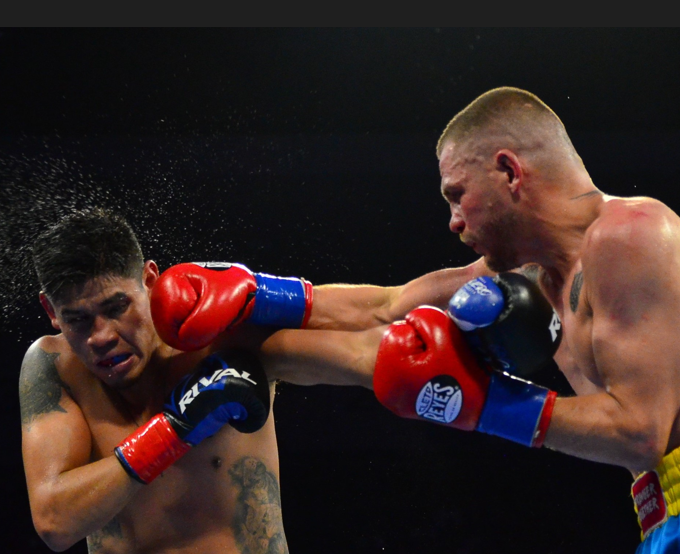
Whether it was inspiration or perspiration, Ukraine’s Denys Berinchyk motored past Mexico’s Emanuel Navarrete by split decision to become the WBO lightweight world titlist on Saturday.
Just hours after his fellow countryman Oleksandr Usyk became undisputed heavyweight world champion, Berinchyk joined the club.
“This is a great night for all people of Ukraine,” Berinchyk said.
The undefeated Ukrainian Berinchyk (19-0, 9 KOs) gutted out a win over Navarrete (38-2-1, 31 KOs) who was attempting to join Mexico’s four-division world champion club in San Diego. The lanky fighter known as “Vaquero” fell a little short.
Through all 12 rounds neither fighter was able to dominate and neither was able to score a knockdown. Just when it seemed one fighter gathered enough momentum, the other fighter would rally.
A butt caused a slight cut on Navarrete in the 10th round. That seemed to ignite anger from the Mexican fighter and he powered through the Ukrainian fighter the next two rounds.
In the final round Berinchyk bore down and slugged it out with the Mexican fighter as both relied on their weapons of choice. For most of the night Navarrete scored with long-range uppercuts and Berinchyk scored with overhand rights.
After 12 rounds two judges scored it 115-113, 116-112 for Berinchyk and one 116-112 for Navarrete. Ukraine gained its third world titlist in one a week. Berinchyk joins Usyk and Vasyl Lomachenko as world titlists.
“He’s a very tough guy,” said Berinchyk of Navarrete.
Welterweights
A battle between undefeated welterweights saw Brian Norman (26-0, 20 KOs) knock out Giovany Santillan (32-1, 17 KOs) in the 10th round to become the interim WBO titlist.
For nine rounds both welterweights engaged in brutal inside warfare as each tried to beat the sense out of each other.
Norman worked the body early as Santillan targeted the head. Neither fought more than two inches from each other.
The younger Norman, 23, connected with a right cross during an exchange that wobbled Santillan in the eighth round. From that point on the Georgia fighter began setting up for his power shots. Finally, in the 10th round, uppercuts dropped Santillan twice. In the second knockdown Santillan went down hard as referee Ray Corona stopped the fight immediately at 1:33 of the 10th round.
Other Bouts
Heavyweight Richard Torrez (10-0, 10 KOs) knocked out Brandon Moore (14-1) in the fifth round for a regional title.
Lightweight Alan Garcia (10-0) defeated Wilfredo Flores (10-3-1) by decision after eight.
Photo credit: German Villasenor
To comment on this story in the Fight Forum CLICK HERE
Featured Articles
UNDISPUTED ! – Usyk Defeats Fury ! – Plus Undercard Results from Riyadh
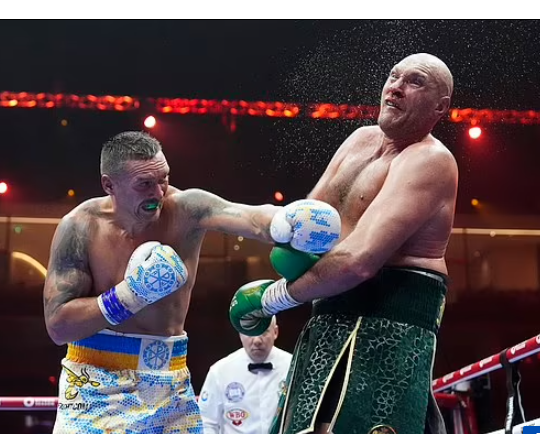
The most ballyhooed fight of the young century played out today at Riyadh Arena in the Kingdom of Saudi Arabia where Ukraine’s amazing Oleksandr Usyk became an undisputed world champion in a second weight class with a split decision over WBC and lineal heavyweight champion Tyson Fury.
This was a memorable fight with twists and turns. Usyk had some good moments early, but the middle rounds belonged to the Gypsy King. Heading into the second half of the bout, the old saying that a good big man will always beat a good little man, appeared to be holding up once again. Fury was having good success working the body as his trainer SugarHill Steward exhorted him to do, and when he went upstairs, he rattled Usyk, notably in round five when a big uppercut appeared to lift the Ukrainian off his feet. But Usyk finished round seven strong, a prelude of what was to come.
Usyk plainly won round eight and in round nine, he came within a whisper of ending it. A flurry of punches sent Fury reeling. He crashed into the ring ropes which dictated a standing-8 count from referee Mark Nelson. If Nelson had waited a few more seconds, he would have likely waved the fight off as Fury was on queer street. But this dramatic turnaround came late in the round and the Gypsy King was saved by the bell.
Among other things, Tyson Fury is known for his amazing powers of recuperation. He not only stayed the course, but appeared to win the final round. But in the end, Oleksandr Usyk, now 22-0 (14) saddled Fury (34-1-1) with his first defeat. Two of the judges favored him (115-112, 114-113) with the dissenter scoring it for Fury 114-113.
A draw wouldn’t have caused much of a stink and now they will do it again. The sequel is tentatively scheduled for October. Both are getting a little long in the tooth – Usyk is 37 and Fury is 35 – so we will be surprised if the rematch lives up to the hype.
Semi-wind-up
The first encounter between Jai Opetaia and Mairis Briedis was a grueling fight. Opetaia, an Australian Olympian at age 16, won the battle (a fair decision) but yet took the worst of it. Early in that bout, he had his jaw fractured in two places and for the next two months was forced to eat out of a straw.
The rematch tonight in Riyadh was a monotonous fight through the first nine rounds. Briedis, now 39 years old and inactive since their first meeting, looked old and rusty. But the fight heated up in round 10 and the championship rounds belonged to the Latvian.
It came too little, too late, however, as Briedis needed a knockout to win. At the conclusion, the judges favored the Aussie by scores of 117-111 and 116-112 twice.
Opetaia, 28, improved to 25-0 (19). Briedis, who has defeated everyone that he has fought with the exceptions of Opetaia and Oleksandr Usyk (and the Usyk fight was close) falls to 28-3.
The first fight between Opetaia and Briedis was for the IBF cruiserweight title. Tonight’s match is for the vacant IBF cruiserweight title (don’t ask).
Cordina-Cacace
In a major upset, Belfast’s Anthony Cacace, a 12-year pro, captured the IBF 130-pound world title with a seventh-round stoppage of previously undefeated Joe Cordina who went to post a consensus 7/1 favorite. The end came 39 seconds into round seven with Cacace pummeling Cordina against the ropes.
The Irishman was the busier fighter and landed the harder punches, but the bout was not without controversy. In the third frame, Cacace stunned Cordina with a punch that landed after the referee ordered the fighters to break. That put Cordina on the defensive and before the round was over, Cacace put him on the canvas with a wicked uppercut and Cordina, badly hurt, barely survived the round. Cacace (22-1, 8 KOs) had a big sixth round and closed the show in the next stanza.
Cordina, a 2016 Olympian who was undefeated in 17 pro fights heading in, is a close friend and frequent workout partner of Lauren Price who captured the WBC female welterweight title last week. She now stands alone as the only current world champion from Wales.
Kabayel-Sanchez
In a mild upset, Agit Kabayel continued his late career surge with a seventh-round KO of previously undefeated Frank Sanchez. As was the case in his last fight when he upset Arslanbek Makhmudov, Kabayel (25-0, 17 KOs) finished his opponent with body punches. A left-right combination knocked Sanchez to his knees and then, after Sanchez got to his feet, a straight right to the belly sent him down again and he wasn’t able to beat the count.
Sanchez, who was 24-0 heading in, entered the bout with a brace over his right knee that compromised his mobility. Kabayel, the aggressor throughout, was comfortably ahead at the time of the stoppage. The official time was 2:23 of round seven.
Kovalev-Safar
In a dull 10-rounder, unsung Robin Safar, a Swedish-born fighter of Kurdish descent, may have written the finish for the career of Sergey Kovalev. At age 41 in his second fight as a cruiserweight and coming off a two-year layoff, the “Krusher” was a pale imitation of the fighter that won nine straight light heavyweight title fights before losing a controversial decision to Andre Ward in their first encounter.
Safar, who improved to 17-0 (12) punctuated his triumph by knocking down Kovalev (35-5-1) with a big right hand inside the final 10 seconds of the final round. The judges had it 99-90, 97-92, and 95-94.
Two early fights ended in early knockouts.
Moses Itauma, a 19-year-old, six-foot-six southpaw who was raised in London by a Nigerian father and a Slovakian mother, stopped Ilya Mezercev at the 50-second mark of the second round. Mezercev made it to his feet after being decked with a big right hook, but his legs were jelly and the fight was waved off.
Trained by Ben Davison, Itauma (9-0, 7 KOs) has been hailed as the next Anthony Joshua. As an amateur, he was reportedly 24-0. Mezercev, a Germany-based Kazkh, declined to 25-9.
British lightweight Mark “Thunder” Chamberlain (16-0, 12 KOs) looked sensational while blasting out Joshua Oluwaseun Wahab in the opening stanza. Chamberlain had Wahab (23-2) on the deck twice before the bout was waived off at the 2:42 mark.
To comment on this story in the Fight Forum CLICK HERE
Featured Articles
Avila Perspective, Chap. 284: Tyson Fury, Oleksandr Usyk, and Much More
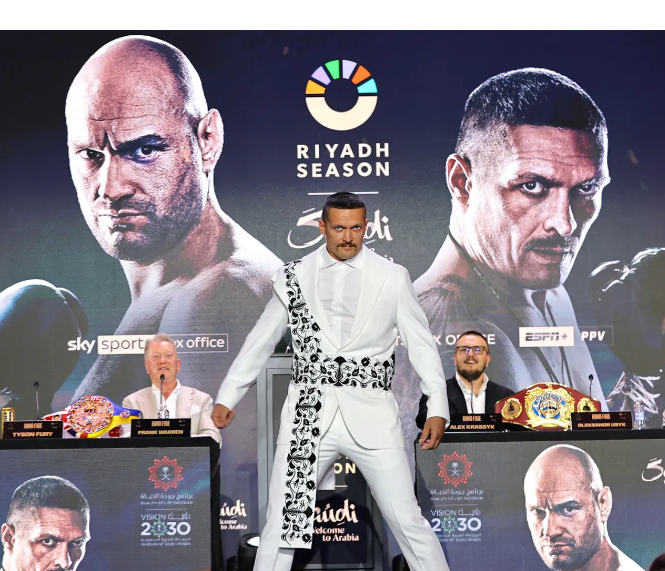
Avila Perspective, Chap. 284: Tyson Fury, Oleksandr Usyk, and Much More
Argue all you want about the appeal of other sports, only boxing grabs fans on all levels and stratum.
It’s the oldest sport that has an international swag that only the World Cup can rival once every four years. Boxing has it every year.
Heavyweights take the forefront in Saudi Arabia while lightweights battle in Southern California. It’s an all-day affair pitting champions from all parts of the world.
Tyson Fury (34-0-1, 24 KOs), the WBC and lineal heavyweight champion, finally meets Oleksandr Usyk (21-0, 15 KOs) who holds the IBF, WBA and WBO heavyweight titles on Saturday, May 18, at Riyadh. DAZN ppv, ESPN ppv, and PPV.Com will stream the massive fight card at 9 a.m. PT/ 12 p.m. ET.
It’s a rare opportunity to decide who truly is the “baddest man on the planet.” Ever since the emergence of the alphabet titles, few know the name of the heavyweight champion. Not since Mike Tyson ruled the prize ring could fans tell you the name of the champ.
Some people still think Tyson is the heavyweight champ.
Now we have England’s “Gypsy King” Fury ready to prove that he indeed is the biggest and baddest of all the heavyweights in the world. He’s got his dad head-butting people to prove it.
“I predict that somebody’s ‘0’ has got to go. And it’s going to be that team over there, unfortunately for them,” said Tyson Fury who at six-feet, nine-inches tall towers over most opponents.
Facing Fury is Usyk, the Ukrainian fighter who twice defeated Anthony Joshua for several versions of the heavyweight championship.
Though several inches shorter and much lighter in weight, Usyk has displayed mobility and agility that allows him to dart in and out of danger. Will this tactic work against Fury?
“I have a plan. It’s a better plan. And it’s a great plan,” said Usyk. “I will have the opportunity to become undisputed for a second time.”
Of course, size doesn’t always matter when it comes to heavyweights. History has taught us the bigger man doesn’t always win. From Jack Dempsey whipping Jess Willard to Joe Frazier beating Buster Mathis, size doesn’t dictate the winner when it comes to heavyweights.
Top Rank’s Bob Arum summed up the importance of this heavyweight clash.
“After this fight, there is one ‘Baddest Man on the Planet,’ the undisputed heavyweight champion. That means everything in the sport of boxing. That means everything for fans who love boxing,” said Arum.
Two other world titles fights are also planned.
IBF super featherweight titlist Joe Cordina (17-0, 9 KOs) defends against Anthony Cacace (21-1, 7 KOs).
Cordina was seen in Santa Monica, California sparring various super featherweights in preparation for this match. His last match against Texan Edwin Vazquez was a squeaker but you can never tell what the Welsh fighter will do.
Who can forget his two-round demolition of Japan’s Kenichi Ogawa?
Cruiserweights also battle. IBF titlist Jai Opetaia (24-0, 19 KOs) of Australia defends against Latvia’s Mairis Briedis (28-2, 20 KOs). This is a rematch. They fought two years ago with Opetaia winning by decision in Australia. Can Opetaia do it again in neutral territory?
PPV.Com
Headlining the PPV.COM announcing crew for the Fury-Usyk card will be Dan Canobbio, Chris Algieri and Kevin Iole. They will be commentating and also discussing the fight via text on social media.
It’s been almost a year since this this style of reporting was adopted. Fans like the opportunity to discuss the fight with the experts.
San Diego Fights
Three-division world champion Emanuel Navarrete (38-1-1, 31 KOs) attempts to become a four-division world champion when he meets Ukraine’s Denys Berinchyk (18-0, 9 KOs) for the vacant WBO lightweight title on Saturday, May 18, at Pechanga Arena in San Diego, Calif. ESPN will televise.
The Mexican fighter known as “El Vaquero” seeks to become the sixth Mexican fighter with four division world titles and join the prestigious elite. Among those accomplishing the feat are Saul “Canelo” Alvarez, Juan Manuel Marquez, Erik Morales, Jorge Arce and Leo Santa Cruz.
Navarrete barely survived his last fight with a majority draw against Robson Conceicao last November in Las Vegas. Perhaps the extra five pounds will help?
On the co-main event welterweight contender Giovani Santillan (32-0, 17 KOs) of San Diego returns home to face Georgia’s Brian Norman (25-0, 19 KOs) for the interim WBO welterweight title.
Santillan, 32, is coming off a big knockout win over Alexis Rocha last year. The southpaw has always stepped up when bigger and better competition confronts him. Can he do it again?
Norman, 23, is a hard-hitting welterweight who fought 16 times in his first two years. Many of those fights took place in Mexico. It’s a big test for him.
East L.A. Fights
Super featherweights Dariial Kuchmenov (7-0) and Daniel Lugo (5-2) meet Saturday May 18, at Salesian High School in East Los Angeles. The Elite Boxing USA promotions card begins at 6 p.m. The card features several other bouts including female fighter Mayra Ruiz.
For tickets go to www.tix.com/ticket-sales/eliteboxing/7
18th & Grand Exhibit
The final day to visit the “18th & Grand” exhibit takes place on Sunday May 19, at La Plaza De Cultura Y Artes located at 501 N. Main Street in downtown Los Angeles 90012. The exhibit is free.
Inside you will find photos and art of the Olympic Auditorium that was the center of boxing, wrestling, roller derby, and rock concerts for decades.
For boxing fans, its where the sport showcased the likes of Henry Armstrong, Baby Arizmendi, Art Aragon, Jerry Quarry, Mando Ramos, Scrap Iron Johnson, Art Hafey, and many others.
The exhibit is free of charge.
Jake Paul vs Mike Tyson
Tickets went on sale this week for the return of Iron Mike Tyson who will face Jake Paul in a heavyweight match commissioned as an actual fight.
Most Valuable Promotions will stage Tyson versus Paul along with the rematch between Katie Taylor and Amanda Serrano on July 20, at AT&T Stadium in Arlington, Texas. Netflix will stream the card live.
A number of other bouts are planned for the mega event.
Paul’s first actual boxing match took place when Tyson fought Roy Jones Jr. in Los Angeles several years ago.
“I started Jake off and I’m gonna finish him,” promised Tyson when they fight.
Paul said he respects Tyson like family.
“I love you like a father loves his son, but I must discipline you. You’re going down, man,” said Paul.
Fights to Watch
Sat. PPV.COM 9 a.m. Tyson Fury (34-0-1) vs Oleksandr Usyk (21-0).
Sat. ESPN, 7:30 p.m. Emanuel Navarrete (38-1-1) vs Denys Berinchyk (18-0).
To comment on this story in the Fight Forum CLICK HERE
-
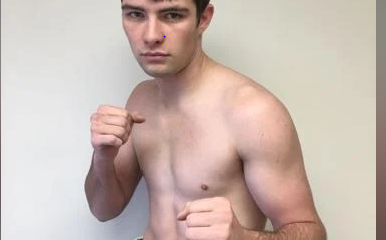
 Featured Articles4 weeks ago
Featured Articles4 weeks agoIn a Massive Upset, Dakota Linger TKOs Kurt Scoby on a Friday Night in Atlanta
-
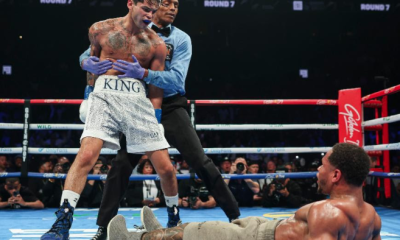
 Featured Articles4 weeks ago
Featured Articles4 weeks agoHaney-Garcia Redux with the Focus on Harvey Dock
-
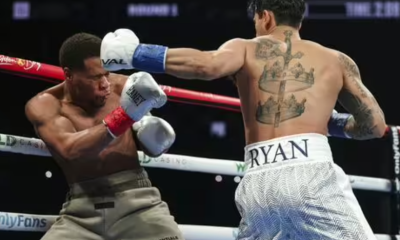
 Featured Articles4 weeks ago
Featured Articles4 weeks agoIn a Shocker, Ryan Garcia Confounds the Experts and Upsets Devin Haney
-
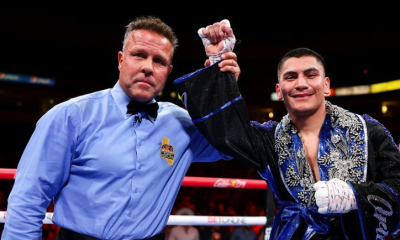
 Featured Articles3 weeks ago
Featured Articles3 weeks agoRamirez Outpoints Barthelemy and Vergil Ortiz Scores Another Fast KO in Fresno
-
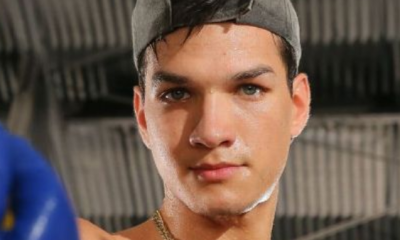
 Featured Articles3 weeks ago
Featured Articles3 weeks agoA Closer Look at Weslaco ‘Heartbreaker’ Brandon Figueroa and an Early Peek at Inoue vs Nery
-
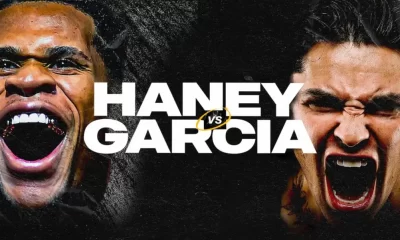
 Featured Articles4 weeks ago
Featured Articles4 weeks agoHaney and Garcia: Bipolar Opposites
-
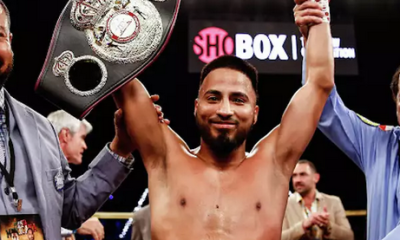
 Featured Articles3 weeks ago
Featured Articles3 weeks agoRamon Cardenas Channels Micky Ward and KOs Eduardo Ramirez on ProBox
-
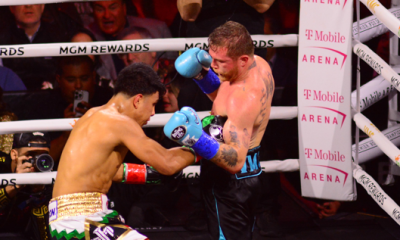
 Featured Articles2 weeks ago
Featured Articles2 weeks agoCanelo Alvarez Turns Away Jaime Munguia to Remain Undisputed King at 168

